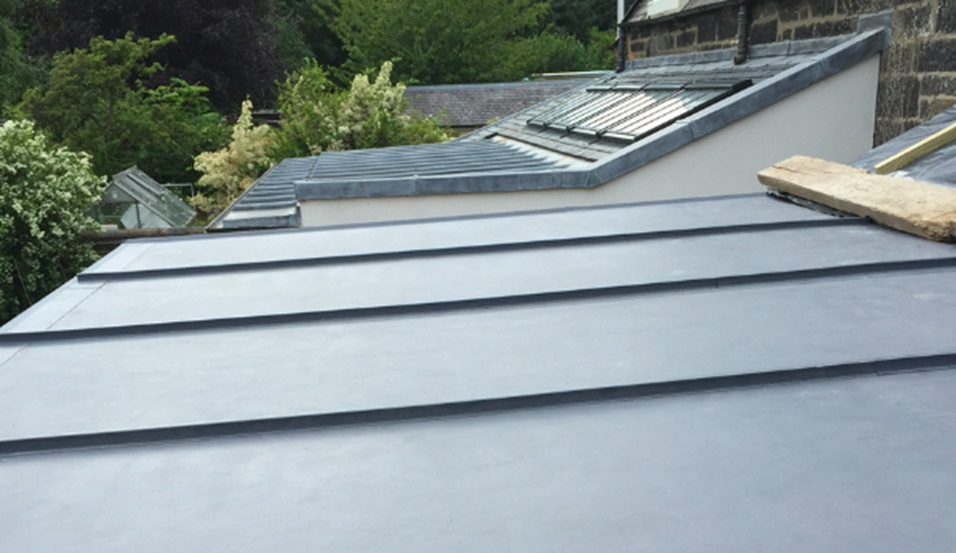
1. Single-Ply Roofing (TPO Roofing, EPDM Roofing & PVC Roofing)
RoofCrafters, performing commercial replacement of single-ply roofing, has become one of the most common choices for flat roofs in both commercial and residential buildings. You can choose from different thicknesses, or your local roofing contractor might ask, “Would you like a 60 mil or 45 mil roof?”
The thicker the material, the higher the number. The longer the manufacturer guarantees the flat roof material, the thicker it is.
Three layers are used in single-ply roofing, either TPO or PVC. The top layer is comprised of three layers: a base layer, a scrim layer (reinforced fiber layer), and thickness over the scrim. This top layer protects the scrim from harmful UV rays.
EPDM membranes are available in 45- or 60-mil thicknesses. EPDM roofs are not hot air welded; instead, their flashings and laps are glued together or taped.
Single-ply roofs are available in white, which is heat-reflective. They also have an energy-star rating. Single-ply roofing is light, fire-resistant, provides a high wind rating, and is resistant to chemicals. These features are essential for commercial and industrial roofing applications. Single-ply roofing is easy to repair and maintain.
However, single-ply roofing is not the most attractive option. Contractors should be aware of the high foot traffic when working on roofs, as these roof systems can be punctured by dropping hand tools and screws, and then walking on them.
2. Modified Bitumen (Rubber Roofing or Mod-Bit)
We’d like to say that Modified Bitumen roofing is the second generation of commercial flat roofing. Built-up or hot tar is the OG of the flat roofing world. Mod-bit became popular because, unlike the hot tar roof that requires setting up a hot tar kettle, heating asphalt onsite to over 500 degrees is a full-time and extremely dangerous job. The roofing industry has slowly been moving away from hot tar roofing. Modified bitumen roofs can be installed with hot tar, but the most popular installation methods are without the hot tar.
Here are the four main installation methods:
- Hot tar applied
- Cold Tar Application
- Torch application
- Self-adhered
This post was written by Ted Williams! Ted is the owner of A Old Time Roofing which offers Roofing Contractors In Clearwater FL! Ted is a Master Elite Weather Stopper GAF Roofing Contractor, a double award winner of Best Steep-Slope Contractor from GAF and achiever of Master Elite Consumer Protection Excellence from GAF. He has been serving the Pinellas County area since 1978. Old Time Roofing has a tradition of quality workmanship, servicing residential and commercial properties.
